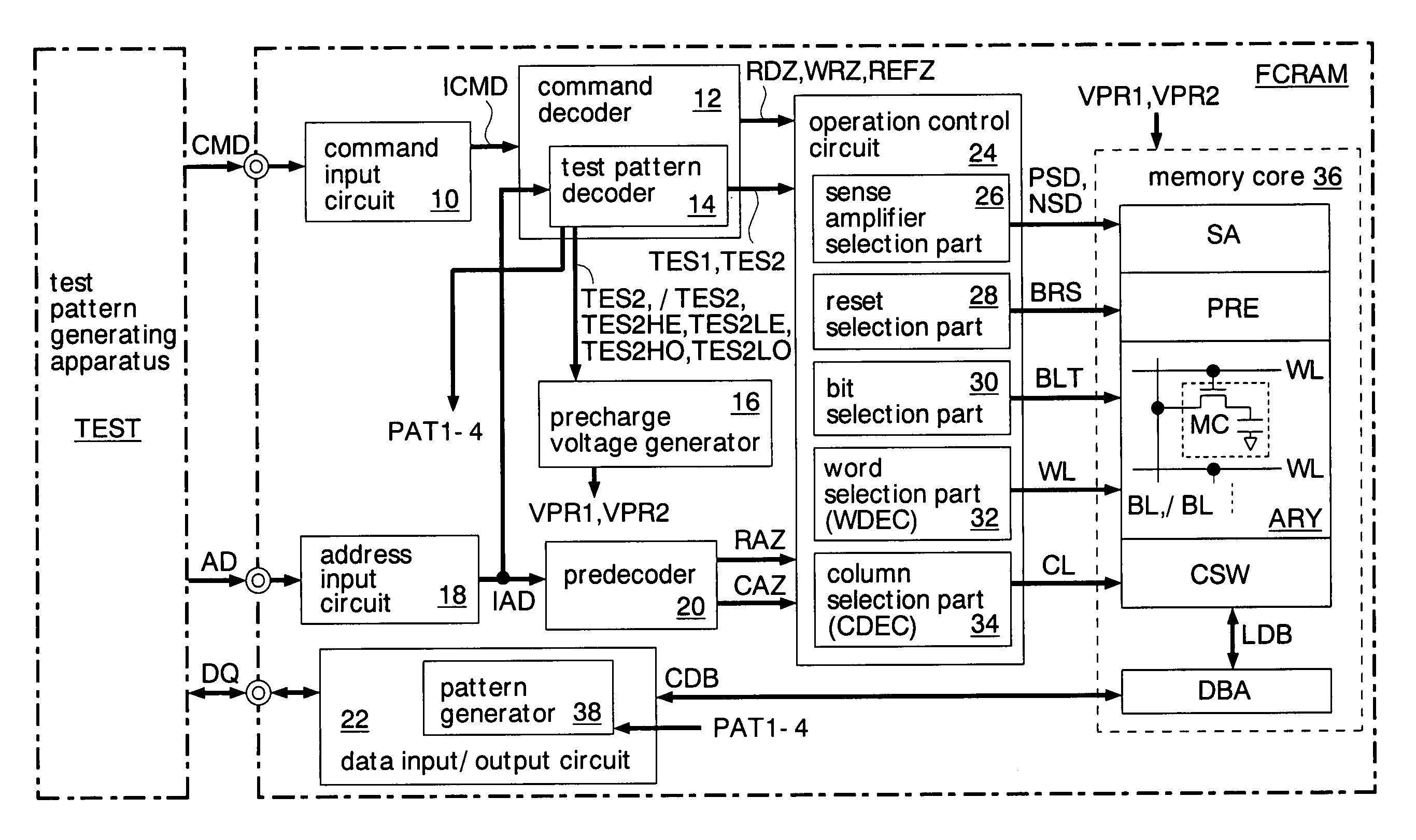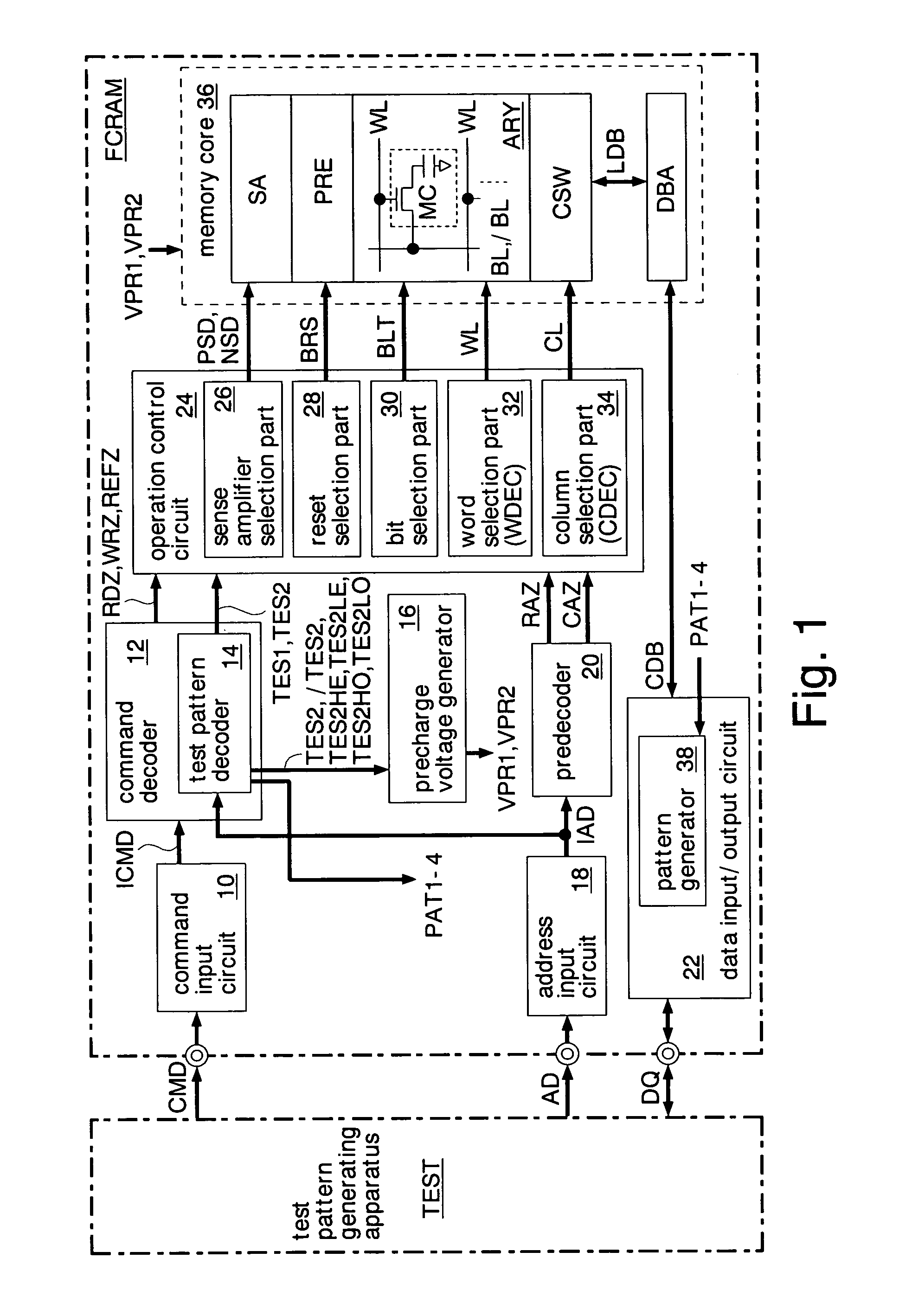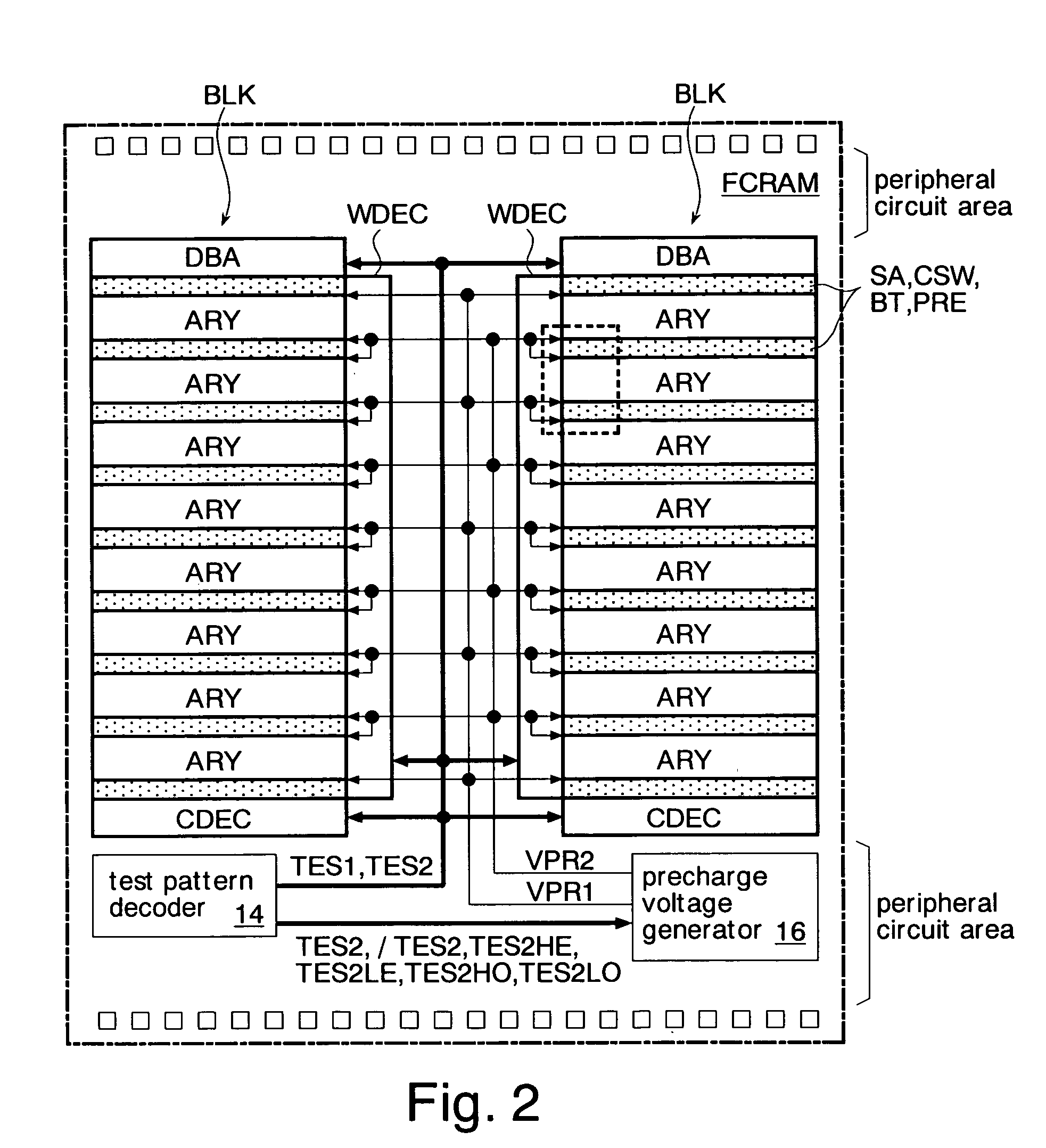Semiconductor memory and burn-in test method of semiconductor memory
a technology of semiconductor memory and burn-in test method, which is applied in the direction of information storage, static storage, digital storage, etc., can solve the problems of increased parasitic capacitance, increased parasitic capacitance, and increase of coupling capacitance between the wiring lines, so as to achieve the effect of reducing the number of circuits to be formed within the semiconductor memory for burn-in test, reducing the number of circuits to be burned in, and reducing the number of burn-in tests
- Summary
- Abstract
- Description
- Claims
- Application Information
AI Technical Summary
Benefits of technology
Problems solved by technology
Method used
Image
Examples
Embodiment Construction
[0039]Preferred embodiments of the invention will now be described with reference to the accompanying drawings. In the drawings, double circles denote an external terminal, and a bold signal line denotes a plurality of signal lines. A part of a block connected to a bold line is composed of a plurality of circuits. A signal line through which a signal is transferred is denoted by a symbol equal to the name of the signal. A signal suffixed with ‘ / ’ indicates a negative logic. A signal prefixed with ‘Z’ indicates a positive logic.
[0040]FIG. 1 is a block diagram illustrating a semiconductor memory according to a first embodiment of the invention. The semiconductor memory is an FCRAM (Fast Cycle RAM) that has memory cells (dynamic memory cells) of a DRAM and an interface of an SRAM using a CMOS technology. The FCRAM is a kind of pseudo SRAM. The FCRAM performs a refresh operation inside a chip at regular intervals instead of receiving a refresh command from the outside, thereby maintaini...
PUM
 Login to View More
Login to View More Abstract
Description
Claims
Application Information
 Login to View More
Login to View More - R&D
- Intellectual Property
- Life Sciences
- Materials
- Tech Scout
- Unparalleled Data Quality
- Higher Quality Content
- 60% Fewer Hallucinations
Browse by: Latest US Patents, China's latest patents, Technical Efficacy Thesaurus, Application Domain, Technology Topic, Popular Technical Reports.
© 2025 PatSnap. All rights reserved.Legal|Privacy policy|Modern Slavery Act Transparency Statement|Sitemap|About US| Contact US: help@patsnap.com



